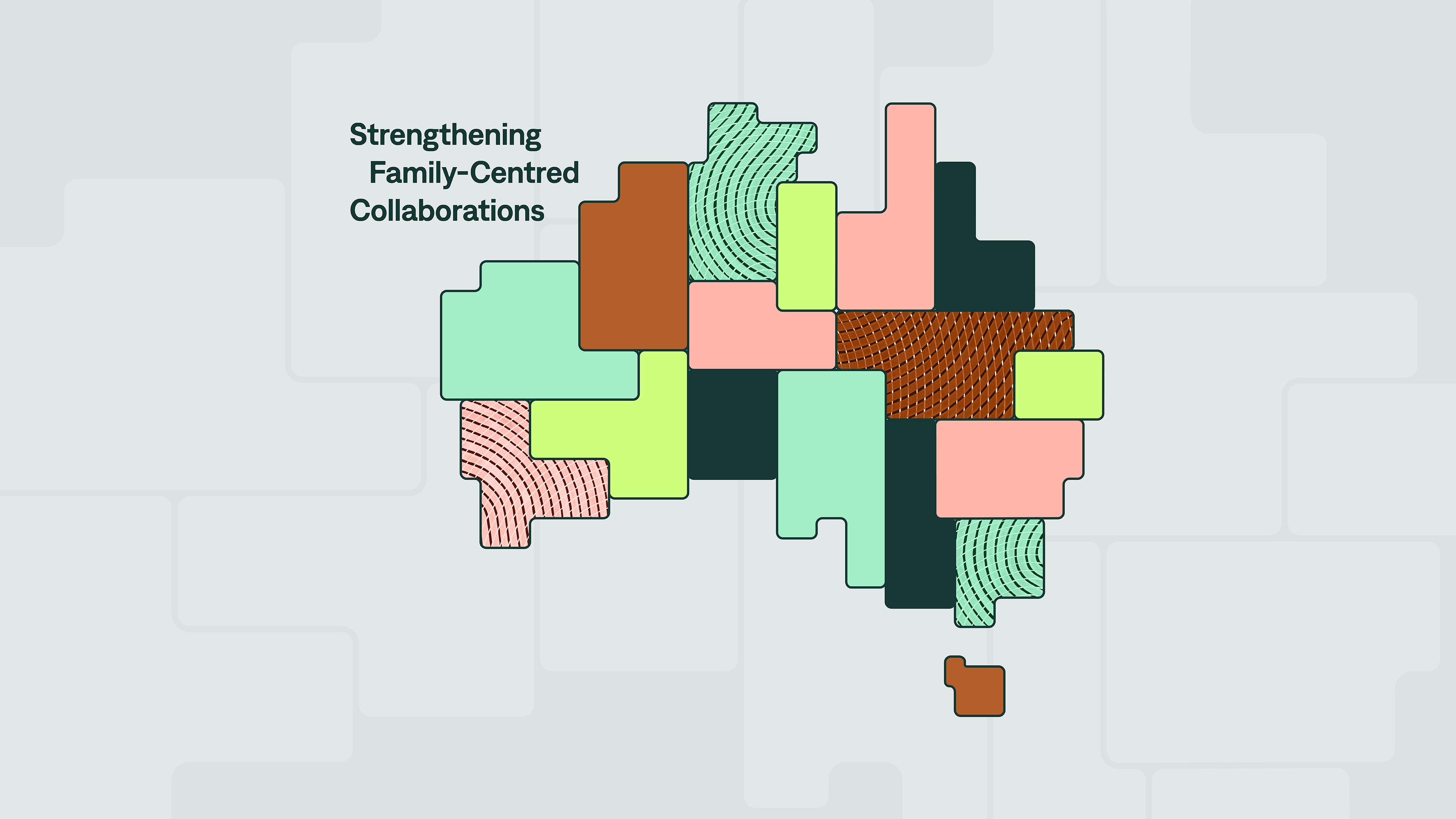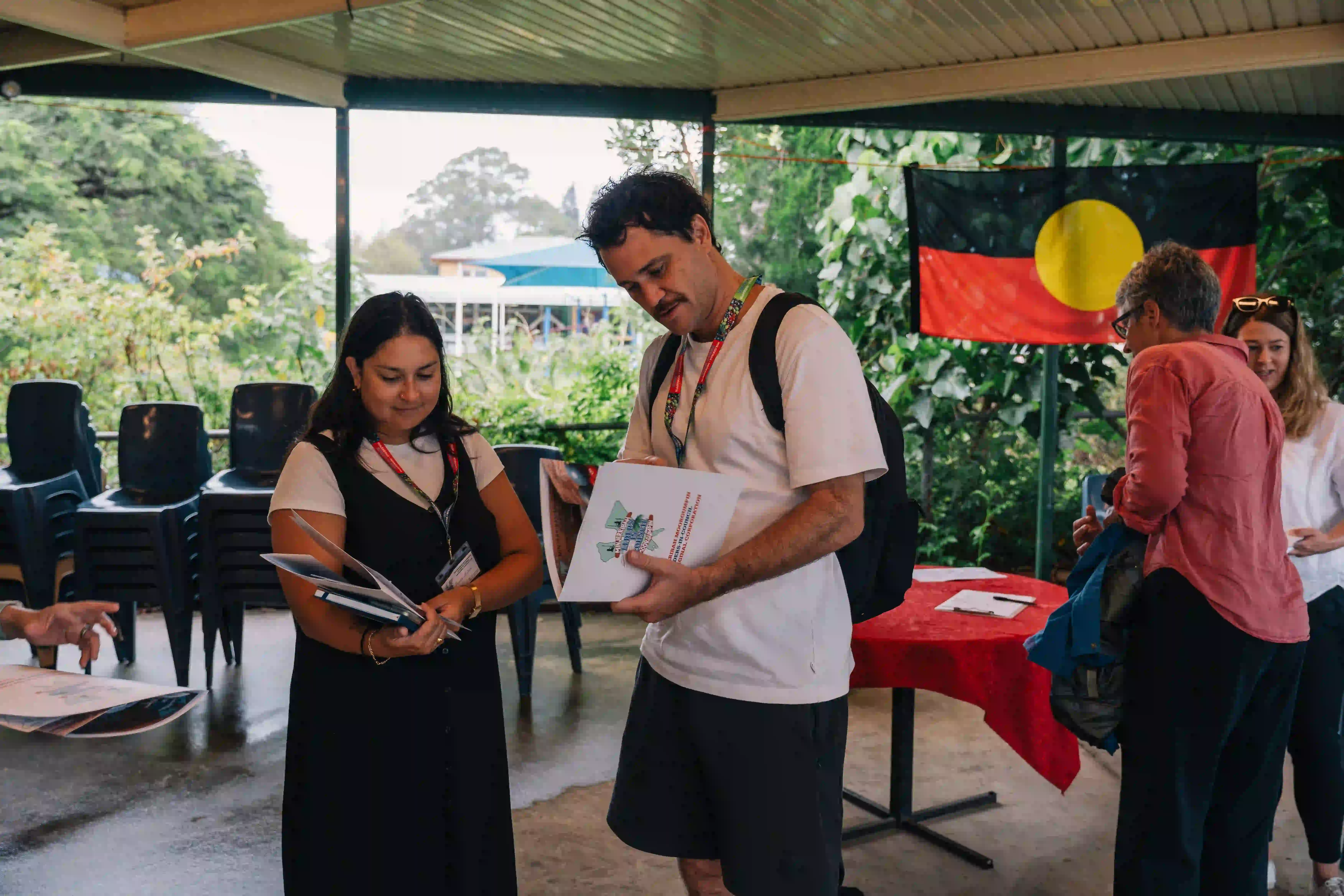This article was originally published 19 May 2024 by PRF CEO Professor Kristy Muir via LinkedIn.
As an academic and Professor of Social Policy, I have spent decades researching complex social issues that sit within systems, working in purposeful collaborations across sectors aiming to create change, and almost ten-years teaching and facilitating leadership and applied systems thinking to postgraduate students, Board Directors, for-purpose CEOs and leaders.
As the CEO of the Paul Ramsay Foundation, I have now had the privilege of working closely with my team and Board to move PRF’s strategy to a systems approach, which is key to our new strategic intent (May 2024).
While systems change is sometimes misunderstood and difficult to apply, it contains enormous potential. This article is a culmination of many years of research, practice and teaching. It builds off the work of others and many years of my evolution in considering, teaching and practicing leadership for social change.
___
It has been a generation since Australia experienced its deadliest gun massacre at Port Arthur in Tasmania. It was a devastating catalyst for remarkable systems change. On 28 April 1996, 35 people were murdered, including young children, and 18 others were wounded by a lone gunman with a semi-automatic rifle. Over the course of just 12 days from the tragedy, Australia’s federal, state and territory governments agreed to make their gun laws uniform.[1]
The recent spate of devastating ‘knife’ crimes and victims in Australia[2] made me grateful for the gun control we have in this country and reflect on the ‘what it took’ for such significant, impactful system change to occur. Despite the 12-day response, this was not a simple, linear cause (gun massacre) and effect (gun control is legislated across the country) case study.
In the face of other complex social and environmental challenges that sometimes feel impossible to shift, what can we learn from this example?
In attempting to change any system, it is important to be clear about what a system is, which system we’re changing, how that system is currently working, the sub-systems that will be affected and the type of change that is needed.
So, before unpacking this case study, it is worth clarifying some key definitions: What do we mean by systems, systems thinking, and systems change?
Systems are complex – there are many parts that play different roles, the parts are interdependent, the whole is greater than the sum of its parts, there are many interacting feedback loops where the behaviour of one part affects other parts (whether it is intended or not), they like balance and will resist change and struggle with unintended consequences.[3] If this isn’t complex enough, there are systems within systems.
Systems thinking is “a way to understand the complex interrelationships among various players and their dynamics... that resists simple, reductionist thinking. … [and] enable us to address challenges at the root cause rather than at the surface.”[4]
To change a system requires “shifting component parts … – and the pattern of interactions between these parts – to ultimately form a new system that behaves in a qualitatively different way. Systems change often involves a series of shifts that work together to disrupt the status quo.”[5]
The “series of shifts” involve numerous actions (or ‘levers’ for change) from a range of different people or organisations (‘agents’) who are all part of the larger ecosystem. This brings me to two systems change myths worth busting: a) ‘the system is over there’; and b) ‘the system is broken’. Because systems are made up of multiple parts, the system isn’t over there, we are the system. And secondly, as Heifetz, Grashow and Linsky (2009) put it, ”The reality is that any social system … is the way it is because the people in that system (at least those individuals and factions with the most leverage) want it that way.”[6]Therefore, the art of applying systems thinking is recognising what our role and agency is within the system, understanding who is benefiting from the existing system, where resistance might be, what is to be lost and gained and for who, and potential unintended consequences.
Applying systems thinking is therefore non-linear, the work of many, and goes beyond a technical response. While there are many models and frameworks around system change,[7] levers for change can be somewhat simplified into three categories:
- Technical work: changes to polices, programs, practices, legislation, regulation etc, including research to understand what works and what does not and for who and to test alternative models.
- Where the resources go: changes to where funding flows, who makes the decisions, how resources get used (time, talent and treasure) and how the work gets done (individually, in coordination with others, or through genuine collaboration)
- Hearts and minds: understanding, galvanising and changing attitudes, beliefs, values and fears, who has something to gain, who has something to fear and who has something to lose.
In the case of gun control in Australia, the system was made up of many parts and actors; National, State and Territory Governments, factions for and against gun control, those directly and indirectly affected by the Port Arthur massacre, the broader population and many groups who had an interest in either maintaining the system or changing it.
The 12 days between the massacre and the legislative change were critical, but this was not new work. Many actors had been advocating for technical changes for a long time. Gun control advocates had already looked at all state and territory gun laws and proposed national standards. Governments already had information, analysis and recommendations of previous gun law inquiries. Therefore, when the 28 April occurred, another inquiry was not required or called.[8]
Beyond the technical, ‘hearts and minds’ were strongly at play. Port Arthur was a well-known tourist spot. Families and communities from around Australia were affected. The feeling of urgency was also heightened by Scotland’s Dunblane massacre of 16 children and their teacher six weeks earlier.[9]
As in any system change, there were people who benefited from the previous gun control laws and had something to lose if changes took place. Many farmers, recreational shooters and gun lobbyists opposed the decision and this political move put pressure on the National Party and Howard’s Coalition government.
Prime Minister Howard, who personally strongly believed in gun control, had political capital to spend and little at stake given the election cycle. It was an ideal policy window. His government was elected less than two-months earlier in a landslide victory[10] and the Coalition was in power in most of the states and territories. Therefore, the power dynamics created an opportunity for nationally led action across the country.
The hearts and minds factors interplayed with ‘where resources go’. There were Federal, State and Territory Government decisions to be made and a population who would ‘pay’ for the buy-back scheme. The reforms were incentivised by an amnesty period and buyback of semi-automatic weapons and guns from owners no longer qualified to possess them. The $500m raised to pay for the buy-back scheme cost the tax paying public, via increasing the Medicare levy from 1.5% to 1.7%.[11] At the same time, Australia’s Coalition for Gun Control issued clear communication for journalists to use. They also brought together a unified voice of 350 organisations representing corporates, government employees, non-profits, religious and community groups who had a direct or indirect interest in gun control. This group and much of the media messaging called for change.
Notably, therefore, the system change had a ‘package’ of technical, resource flow, and hearts and minds responses. The technical policy changes alone were multi-pronged – the National Firearms Agreement strengthened gun-owner licensing, firearm registration, safe storage policies, and there were suicide prevention programs.
Consequently, about 650,000 guns were destroyed.[12] And, while the measurement cannot be directly attributable to the changes (common in any system change reform), research has found significant decreases in homicide rates in Australia and suicide by firearm.[13]
The work is long term and sets a pathway for ongoing push-back (reversion to the old system), evolution and change. For example, a national integrated registry was to be formed but it was not until late 2023 that national and state leaders agreed to create a national firearms register (spurred on by the 2022 murder of two police and a neighbour in Queensland). And the anti-gun lobby movement (e.g. Gun Safety Alliance and Alannah and Madeline Foundation) continue to campaign and warn against poor compliance with the National Firearms Agreement.
So what?
In the face of complex social and environmental challenges, it can be hard to believe that intergenerational change is possible. Significant moments in history both reinforce and challenge this thinking.
Importantly, we can learn from this example as a case in point, and other examples of significant shifts over time through history of how to apply systems thinking to create systems change. We can expect push back from those benefiting from the existing system, we can be empathetic and open to what values are being challenged, listen to and address fears. We can ensure we:
- Have a clear agreed purpose and outcome(s)
- Understand context and multiple perspectives across the ecosystem
- Identify key levers for change across the three categories (technical, where resources go, and hearts and minds)
- Determine which agents (with the influence, skills and experience required) play what roles
- Understand where intended and unintended feedback loops might be: who is benefiting from the existing system, who has what to gain, who has what to lose and how to listen to and work across factions and groups, and what might be some unintended consequences to look out for during and after, including the previous system looking for reversion over time
- Track whether and how we are making progress and achieving change over time.
This work is not easy. But it is possible. As Senge, Hamilton and Kania said, it will also require: “opening the mind (to challenge our assumptions), opening the heart (to be vulnerable and to truly hear each other), and opening the will (to let go of pre-set goals and agenda to see what is really needed and possible).”[14]
We achieved something monumental in this system change example and there are other practical examples we could draw on. With a systems approach to change, imagine what we could achieve in a generation.
CC BY-ND – re-users may copy and distribute this material in any medium or format in unadapted form, with attribution.
_______________________________
[1] https://www.nma.gov.au/defining-moments/resources/port-arthur-massacre
[3] Dass, S., Muir, K., Rangan, K. (2020), Non-Profit Boards: It is time to lift your gaze and see the system, HBS Working Paper #21-058.
[4] Trelstad, B. and Varma, P. (2021, revised 2023), Systems Thinking, Harvard Business School Module Note 322-030, https://www.hbs.edu/faculty/Pages/item.aspx?num=60861.
[5] Jetel, R. (2022), What is Systems Change: 6 Questions, Answered, https://www.wri.org/insights/systems-change-how-to-top-6-questions-answered
[6] Heifetz, R., Grashow, A., Linsky, M. (2009), “The Practice of Adaptive Leadership: Tools and Tactics for Changing your Organisation and the World”, HBS.
[7] See for example, Meadows, D. (2008) Thinking in Systems. Chelsea Green Publishing; Kania, J, Kramer, M and Senge, P. (2018), The Water of Systems Change, https://www.fsg.org/resource/water_of_systems_change/; Dass, S., Muir, K., Rangan, K. (2020), Non-Profit Boards: It is time to lift your gaze and see the system, HBS Working Paper #21-058.
Leadbeater, C. (2022), How to Shift a System, https://www.systeminnovation.org/blog/how-to-shift-a-system; Leadbeater, C. & Winhall, J. (2021), System Innovation on Purpose, The Rockpool Foundation, https://en.rockwoolfonden.dk/publications/system-innovation-on-purpose/; and the many frameworks offered by The Systems Sanctuary, https://systemsanctuary.com/our-frameworks.
[8] https://www.sydney.edu.au/news-opinion/news/2021/04/08/port-arthur-and-the-battle-for-tougher-gun-laws.html; https://theconversation.com/the-arguments-that-carried-australias-1996-gun-law-reforms-58431.
[9] https://www.britannica.com/event/Dunblane-school-massacre
[10] https://www.naa.gov.au/explore-collection/australias-prime-ministers/john-howard/elections
[11] https://pmtranscripts.pmc.gov.au/sites/default/files/original/00010001.pdf
[12] https://www.nma.gov.au/defining-moments/resources/port-arthur-massacre
[14] Senge, P., Hamilton, H. and Kania, J. (2015), The Dawn of Systems Leadership, SSIR, https://ssir.org/articles/entry/the_dawn_of_system_leadership.










